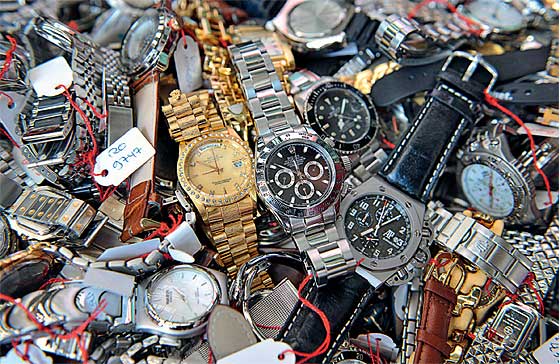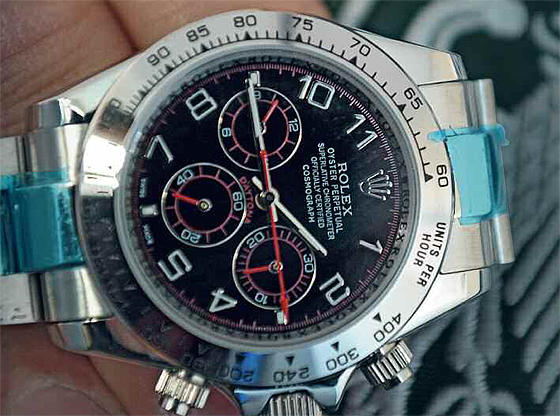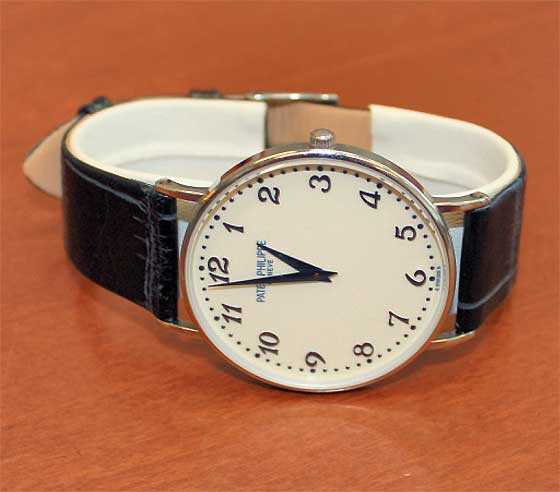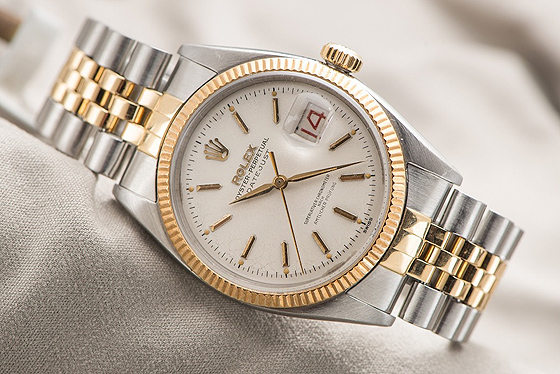Looking for cheap watches on the internet? Better think twice before making that purchase. In this in-depth feature from the WatchTime archives, we explore how sales of these counterfeit watches are hurting both collectors and the watch industry.
For some watch collectors, the temptation is just too much. “I have seen quite respectable watch collectors with nice collections who couldn’t get their hands on that one limited-edition piece that they wanted,” says Beatrice de Quervain, a veteran U.S. watch executive and most recently head of Hublot North America. “They always buy from their authorized dealer, but then, just for that one piece, they broke down and went to an unauthorized source on the Internet. And sure enough, they got burned. They paid $20,000, $25,000.” What they got, de Quervain says, was a counterfeit.
De Quervain’s comments came at a recent meeting of the American Watch Association to discuss the problem of counterfeit watches. AWA invited WatchTime to sit in on the meeting.
The message from the assembled watch company executives and their legal counsels is that, more than ever, watch collectors must be aware – and beware – of the dangers of buying brand-name luxury watches through unauthorized dealers, particularly retail watch sites on the Internet.
That’s because of a recent spike in production of so-called “superfakes,” counterfeit reproductions of popular name-brand models, made primarily in China, that bear a remarkable resemblance to the real thing. “Twenty years ago the fakes were really fake,” says Michael Benavente, managing director of Gucci Watches & Jewelry North America. “You looked at it really quick and you could see it was trash.”
Not anymore. These days, watch executives swap stories about counterfeit watches that are such spitting images of the real McCoys that the brands themselves have trouble spotting them. It’s not just the imitation of what the industry calls “the appearance parts” (case, dial, bracelet, etc.); it’s also the quality of the mechanical movements inside. Michel Arnoux, head of the anti-counterfeiting unit of the Federation of the Swiss Watch Industry (FH), cites a counterfeit Hublot Big Bang tourbillon watch seized by Swiss customs officials. Everything about the watch seemed like a real Hublot, down to the vanilla-scented rubber strap. Only on closer inspection did he find tell-tale signs of a fake: a piece of plastic in the case where carbon should be, a crystal that should have been nonreflective, but wasn’t. But what was most striking was the movement. “That was one of the first times I’ve held in my hand a fake tourbillon watch, a real high-precision mechanism,” Arnoux told Swiss Broadcasting Corp.’s swissinfo.ch news agency. “The counterfeiters have now mastered ultra-complex movements.”
Almost every luxury Swiss watch brand is dealing with the superfake phenomenon, says AWA’s chairman, Jon Omer, former head of DeWitt America LLC. “We are now faced with a new onslaught, which is getting bigger. We’re talking about pieces being sold in excess of $50,000 and $100,000 that are counterfeit watches. Everyone has to contend with it.” Including watch collectors, Omer says. AWA claims that the only protection a consumer has is to buy from an authorized dealer. (Counterfeit watches should not be confused with so-called “gray-market” watches. Unlike counterfeits, gray-market watches are produced by a brand, but sold outside the brand’s authorized retail network. As with counterfeits, AWA opposes the importation and sale of gray-market goods in the United States.)
AWA and its 30-plus member watch companies have been contending with counterfeiters for decades. The watch companies act independently to protect their trademarks and branded products. Some of them spend fortunes annually in a multi-front battle, working with U.S. Customs and federal, state, and local law-enforcement agencies, and even their own private investigators, to fight criminals who steal their intellectual property.
Washington-based AWA works on the legislative and regulatory front. AWA is not a traditional trade association that offers a wide array of member services. Its mission is very specific: to be the voice of its members in Washington, ensuring that the watch industry has input into legislation affecting it on a host of issues ranging from tariffs to regulations on alligator and reptile watch bands to mercury levels in button-cell watch batteries. The association’s legal counsel is the prominent Washington, D.C., law firm Covington & Burling.
In the counterfeit fight, AWA has played an important role. “The association was the prime catalyst in moving the 1984 Trademark Anti-counterfeiting Act through the U.S. House of Representatives and on to final enactment,” says Executive Director Emilio “Toby” Collado. That act made counterfeiting a felony for the first time. A decade later, AWA led the way in drafting and lobbying for stronger weapons against counterfeiters. “We organized the multi-industry coalition that won enactment of the 1996 act which toughened penalties and gave trademark owners stronger search and seizure rights.”
These days AWA is working to pass the so-called “Rogue Websites Bill” (the Protect IP Act of 2011) which would help to shut down Internet sites that sell counterfeit watches. That battle is ongoing, Collado says, in the face of stiff opposition from the Internet industry. “In addition, we are working with others to increase punishments for repeat intellectual property offenders and for IP crimes involving gangs and organized criminal enterprises.”
Finally, there are the many unsuspecting victims who mistakenly believe the name-brand watch they bought is the real deal. “We have clients coming to the customer service desk in our boutique just to size the watch,” says Thierry Prissert, CEO of Breitling North America. “And we have to tell them, to their surprise, that the watch is counterfeit.” Prissert advocates a strong consumer education program about counterfeit watches. “We won’t fix the problem of the gangs making those watches, but at least maybe we can protect our consumers by telling them that in the watch business, buying on the Internet exposes you to tremendous risk because you expose yourself to a fake watch.”
Meanwhile, the watch company wars against those who steal their intellectual property go on. The counterfeiters are formidable foes. Their ability to duplicate watches continually improves. And not just a brand’s watches; they also create counterfeit boxes, warranties, even its website (so-called “mirror sites”). One brand developed hologram stickers to help distinguish its watches from fakes. The counterfeiters duplicated those, too. Says Citizen’s Perlman, “It’s a never-ending battle for a lot of reasons and you can spend an awful lot of money on it. You can never eradicate the problem entirely, but it’s still worth it. We owe it to our companies, our retailers and our consumers to do as much as we can.”




